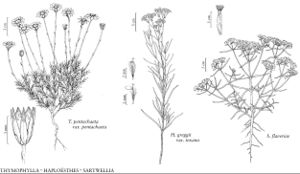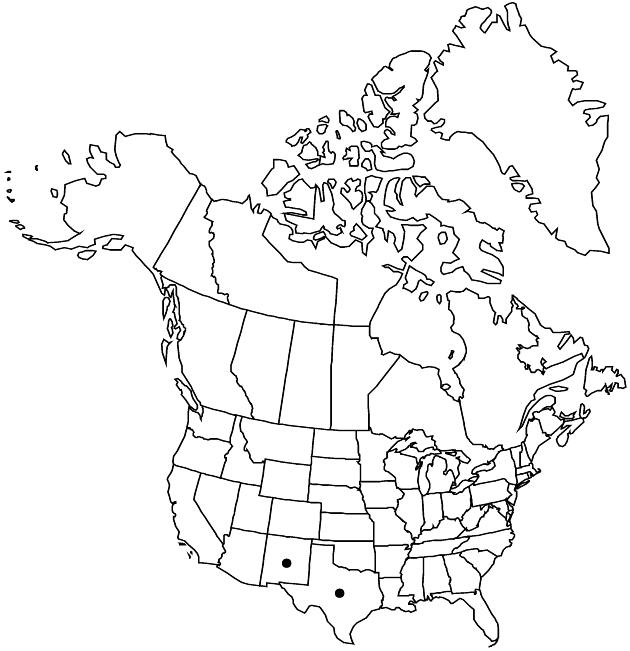Difference between revisions of "Sartwellia flaveriae"
Smithsonian Contr. Knowl. 3(5): 122, plate 6. 1852.
Treatment appears in FNA Volume 21. Treatment on page 247.
FNA>Volume Importer |
FNA>Volume Importer |
||
| Line 45: | Line 45: | ||
|publication year=1852 | |publication year=1852 | ||
|special status= | |special status= | ||
| − | |source xml=https://jpend@bitbucket.org/aafc-mbb/fna-data-curation.git/src/ | + | |source xml=https://jpend@bitbucket.org/aafc-mbb/fna-data-curation.git/src/f50eec43f223ca0e34566be0b046453a0960e173/coarse_grained_fna_xml/V19-20-21/V21_611.xml |
|tribe=Asteraceae tribe Heliantheae | |tribe=Asteraceae tribe Heliantheae | ||
|subtribe=Asteraceae (tribe Heliantheae) subtribe Flaveriinae | |subtribe=Asteraceae (tribe Heliantheae) subtribe Flaveriinae | ||
Revision as of 20:38, 16 December 2019
Leaf blades 20–50 × 1–2.5 mm. Ray laminae ca. 2 mm. Disc corollas ca. 2 mm. Cypselae 1.5–2 mm; pappi ca. 0.5+ mm. 2n = 36.
Phenology: Flowering mostly late summer, rarely spring.
Habitat: Usually gypseous soils
Elevation: 700–1900 m
Discussion
Selected References
None.
Lower Taxa
None.

